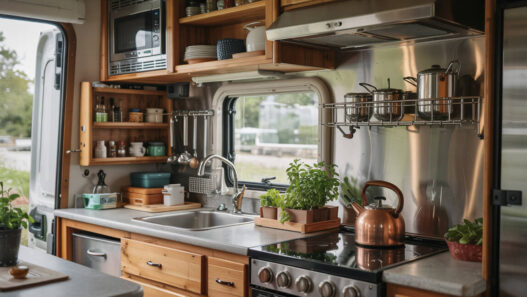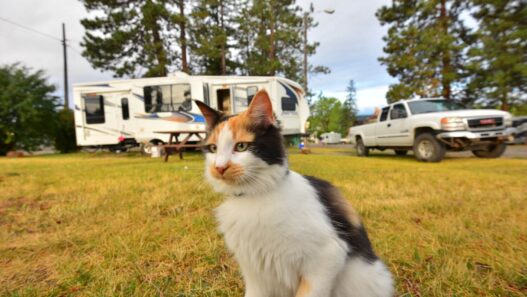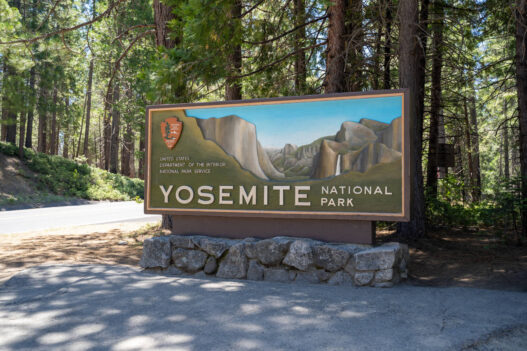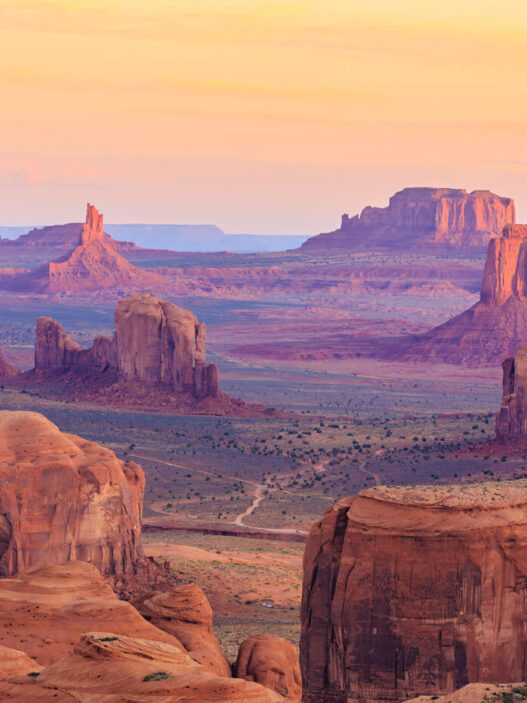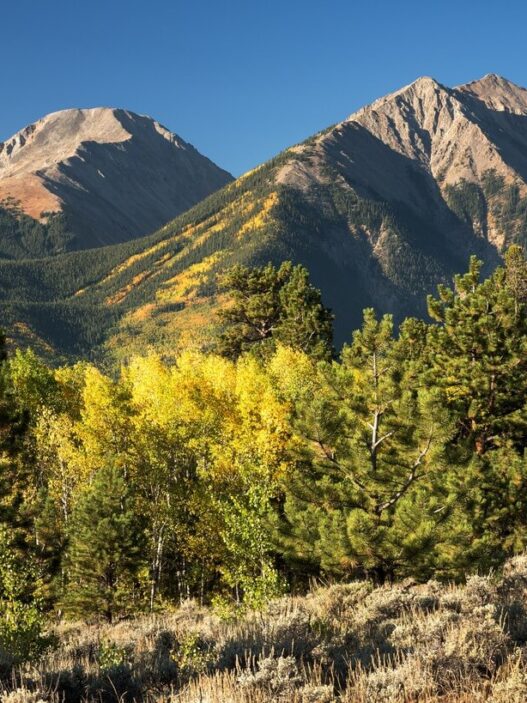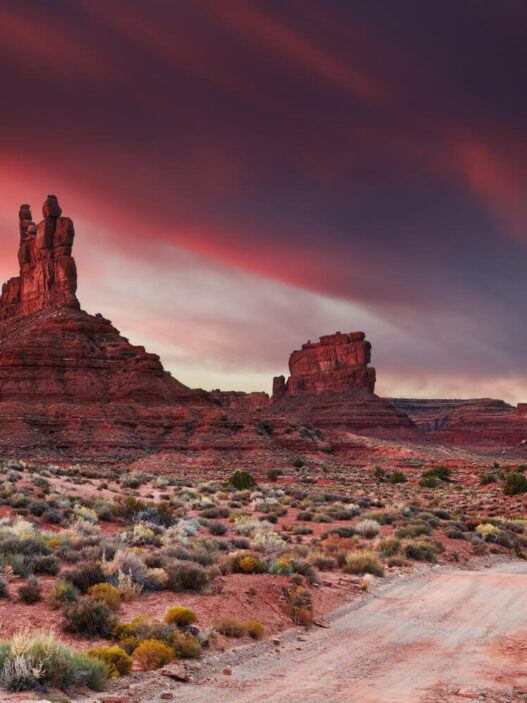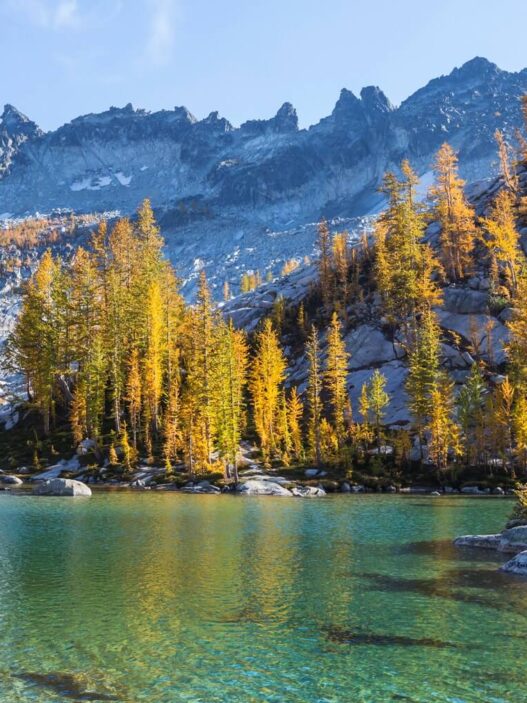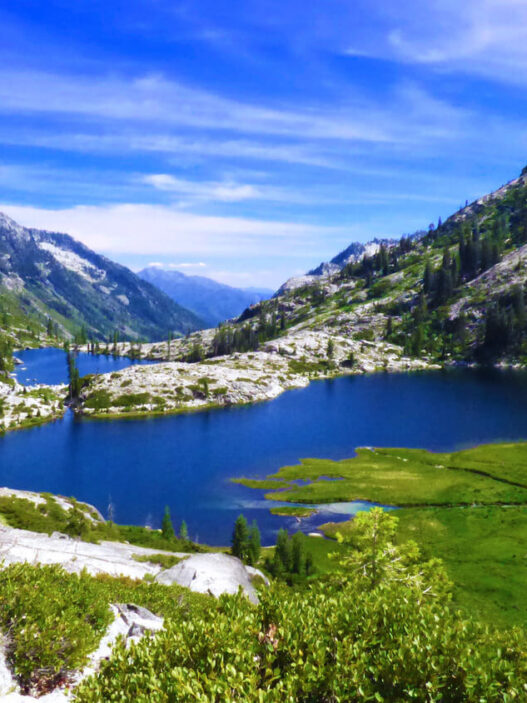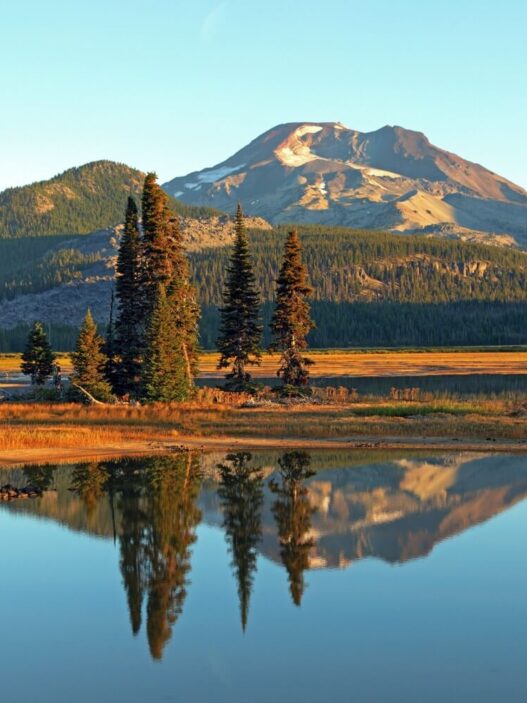Camping in Yosemite National Park is truly a bucket-list experience. As one of America’s most treasured natural landmarks, Yosemite offers campers the extraordinary opportunity to sleep beneath towering granite cliffs, wake up to views of Half Dome, and spend their days exploring some of the most spectacular landscapes in North America.
This guide will walk you through everything you need to know about camping in Yosemite, and what you’ll need to do to secure one of their coveted campsites.
Essential Planning Information
Snagging a campsite in Yosemite takes careful planning and understanding of the park’s systems. Whether you’re a first-time visitor or a returning camper, knowing these essential details will help you navigate the reservation process and prepare for your stay. Let’s break down everything you need to know before your trip.
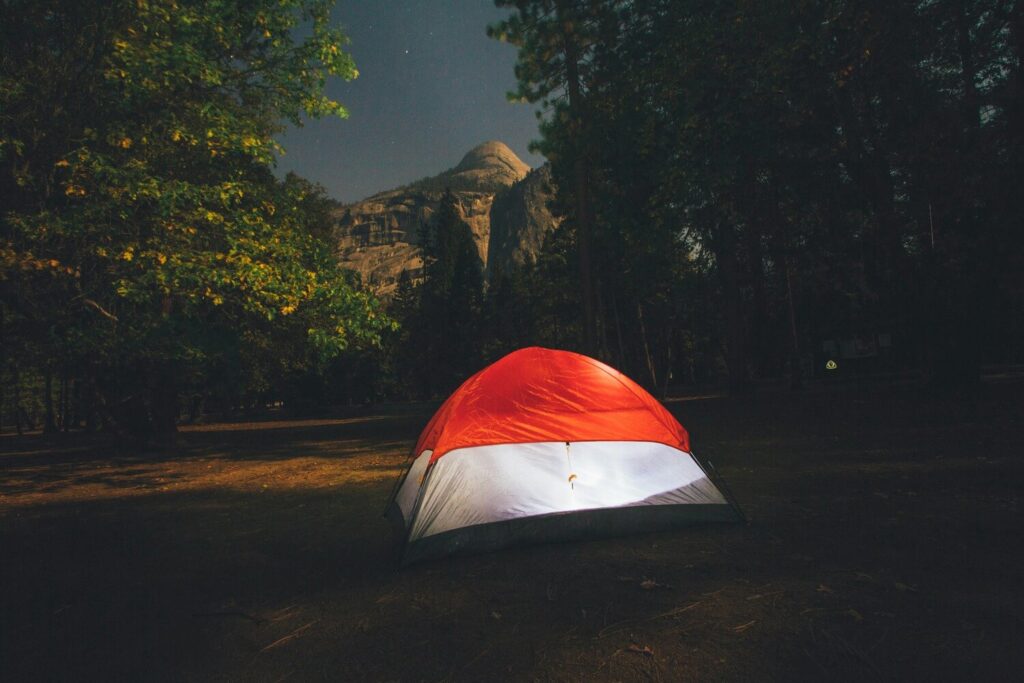
The Reservation System
Let’s address the elephant in the room first: getting a campsite in Yosemite requires planning and a bit of luck. The park uses a unique reservation system that releases campsites in one-month blocks, five months in advance. These releases happen on the 15th of each month at 7 a.m. Pacific time.
Here’s how it works: if you want to camp between June 15 and July 14, you’ll need to try for a reservation on February 15. For a stay between July 15 and August 14, mark March 15 on your calendar. Sites often get booked within seconds of becoming available, so preparation is key. Create your account on Recreation.gov well in advance and be logged in before the release time.
The park also limits how long you can camp. During peak season (May 1 to September 15), you can stay up to 14 nights total, with only 7 of those nights in Yosemite Valley or Wawona. The total yearly camping limit is 30 nights.
General Camping Rules & Information
Each standard campsite accommodates up to six people, and Yosemite takes this limit seriously. You’ll find a fire ring, picnic table, and food locker at every site. Speaking of food lockers, they’re not optional. Yosemite is bear country, and proper food storage is mandatory. All food and scented items must be stored in these bearproof containers when not in use.
If you’re bringing a generator, note the restricted hours: 7 a.m. to 9 a.m., noon to 2 p.m., and 5 p.m. to 7 p.m. During summer months (May through September), wood fires are only permitted from 5 p.m. to 10 p.m., though you can use stoves and charcoal any time.
Amenities in the Park
While camping in Yosemite means embracing nature, you won’t be completely without modern conveniences. However, it’s important to note that none of the campgrounds in the park offer electrical or water hookups. Showers are available at Curry Village and Housekeeping Camp in Yosemite Valley, though not within the campgrounds themselves.
The park maintains three dump stations: one at Upper Pines Campground, another at Tuolumne Meadows, and a third at Wawona (summer only). All campgrounds provide drinking water and either flush or vault toilets, depending on their location and elevation.
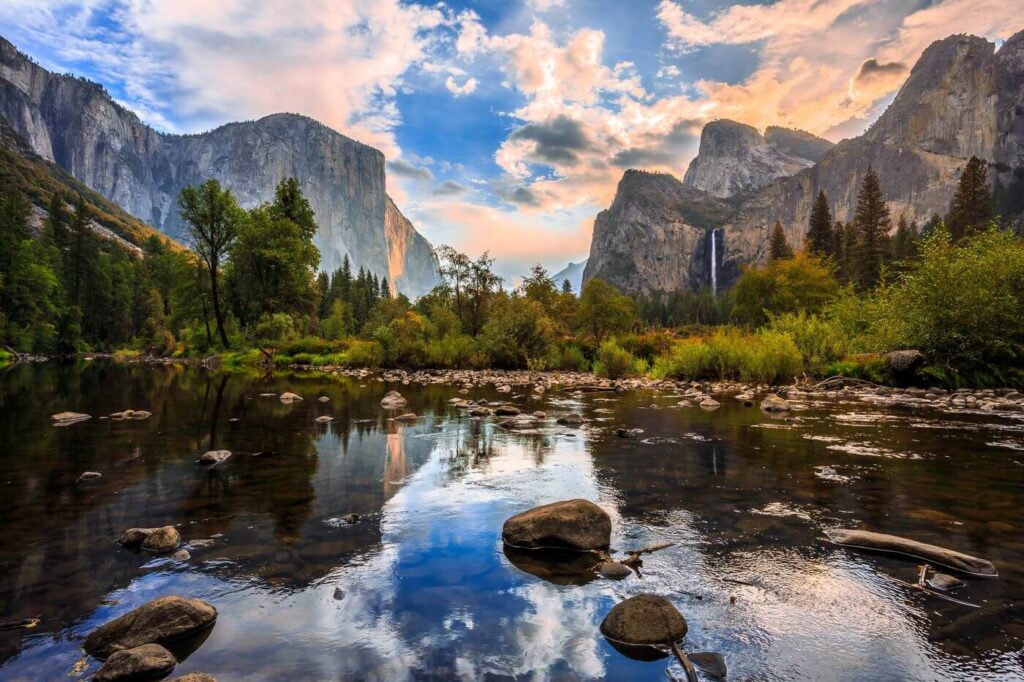
Best Campgrounds by Location
Yosemite’s campgrounds are spread throughout the park, each offering its own unique experience and access to different attractions. From the busy heart of Yosemite Valley to the quiet high-country wilderness, you’ll find options suited to every camping style and preference.
Here’s a detailed look at each campground, organized by region.
Yosemite Valley Campgrounds
The Valley campgrounds offer the most convenient access to Yosemite’s iconic sights and the best amenities. However, they’re also the most competitive to reserve.
1. Upper Pines Campground
As the largest and only year-round campground in Yosemite Valley, Upper Pines provides 238 sites nestled among ponderosa pines and incense cedars. At 4,000 feet elevation, the campground offers stunning views of Half Dome and nearby access to major trailheads. Sites can accommodate RVs up to 35 feet and trailers up to 24 feet. The central location means you’re close to stores, restaurants, and the park’s free shuttle system.
2. Lower Pines Campground
Lower Pines might be smaller with just 60 sites, but many consider it the crown jewel of Yosemite’s campgrounds. Open from April through October, it boasts some of the park’s best views and can accommodate larger RVs up to 40 feet. The campground sits along the Merced River, and many sites offer beautiful riverside locations. It’s just a short walk to Curry Village for supplies or a hot shower.
3. North Pines Campground
Situated between the Merced River and Tenaya Creek, North Pines offers 81 sites in a slightly quieter setting than its siblings. Open from March through October, this campground provides easy access to Mirror Lake and the Yosemite Valley Stable. Like Lower Pines, it can handle RVs up to 40 feet and trailers up to 35 feet.
4. Camp 4
Camp 4 holds a special place in climbing history and maintains its unique character today. This walk-in tent-only campground operates on a different system than other valley campgrounds. During peak season, sites are available through a lottery system one day in advance. It’s particularly popular with rock climbers, given its proximity to many climbing routes.
South Yosemite Campgrounds
The southern region of Yosemite offers a perfect blend of accessibility and serenity. These campgrounds provide convenient access to the majestic Mariposa Grove of Giant Sequoias and the scenic Glacier Point Road, while typically being less crowded than their Valley counterparts.
5. Wawona Campground
Located near the park’s south entrance, Wawona Campground offers 93 sites along the South Fork of the Merced River. Its location provides easy access to the Mariposa Grove of Giant Sequoias, making it perfect for those who want to explore these magnificent trees. The campground sits at 4,000 feet elevation and can accommodate RVs and trailers up to 35 feet.
6. Bridalveil Creek Campground
Situated along Glacier Point Road at 7,200 feet elevation, Bridalveil Creek offers 110 sites in a more secluded setting. The campground is an excellent base for exploring Glacier Point and its numerous hiking trails. It’s open only during summer months and can accommodate RVs up to 35 feet and trailers up to 24 feet.
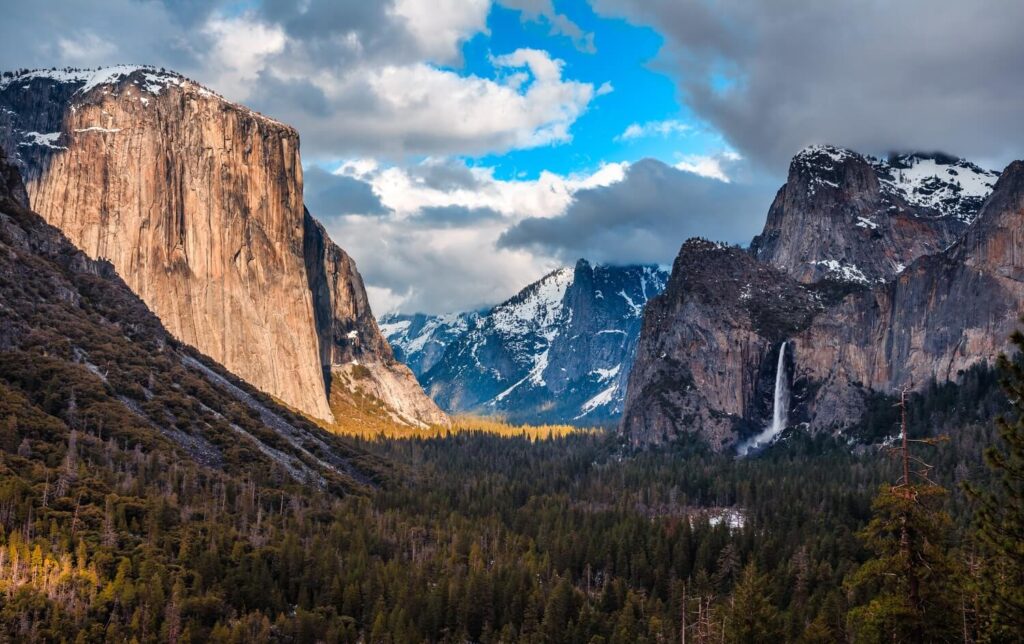
North Yosemite/Tioga Road Campgrounds
The northern region of Yosemite offers the park’s greatest variety of camping experiences. From easily accessible sites near the entrance to remote high-country campgrounds, this area provides options for every type of camper. Many of these campgrounds sit at higher elevations, offering cooler summer temperatures and access to the park’s stunning alpine regions.
7. Hodgdon Meadow Campground
Just inside the Big Oak Flat entrance, Hodgdon Meadow Campground provides a mix of forest and meadow settings at 4,900 feet elevation. With 105 sites, this year-round campground offers a great base for exploring the park’s northern region. The campground can accommodate RVs up to 35 feet and trailers up to 30 feet. During spring, visitors can enjoy abundant wildflowers throughout the meadow areas.
8. Crane Flat Campground
Located only 30 minutes from Yosemite Valley, Crane Flat sits at 6,200 feet elevation in a beautiful forest setting. The campground features 166 sites and includes an amphitheater for evening programs. Open from July through mid-October, it can accommodate RVs up to 35 feet and trailers up to 27 feet. Its central location makes it popular for visitors wanting to explore both the valley and the high country.
9. Tamarack Flat Campground
This more rustic campground offers 52 tent-only sites in a peaceful forest setting. Located three miles off Tioga Road at 6,300 feet elevation, Tamarack Flat provides a more secluded camping experience. The campground doesn’t accommodate RVs or trailers, and campers must treat their own water from Tamarack Creek.
10. White Wolf Campground
For those seeking a more secluded experience, White Wolf Campground sits at 8,000 feet elevation among the trees. Its 74 sites offer access to several high-country trails and lakes. While it’s an hour from the valley, the peaceful setting and proximity to wilderness trails make it worth considering. The campground can handle smaller RVs up to 27 feet and trailers up to 24 feet.
11. Yosemite Creek Campground
Located five miles off Tioga Road at 7,700 feet elevation, Yosemite Creek offers 75 tent-only sites for those seeking a more primitive camping experience. The campground provides access to numerous hiking trails and features beautiful creek-side settings. There’s no running water, so campers must treat water from the creek.
12. Porcupine Flat Campground
Sitting at a lofty 8,100 feet elevation, Porcupine Flat offers 52 sites in a high-country setting. The campground can accommodate smaller RVs up to 24 feet but is better suited for tent camping. Like some other high-country sites, campers must treat their own water from nearby creeks. The campground’s location provides excellent access to high-country trails and alpine environments.
13. Tuolumne Meadows Campground
Tuolumne Meadows is the park’s largest campground with 304 sites. Sitting at 8,600 feet elevation, it offers a completely different Yosemite experience with alpine meadows and high-country adventures. It’s a fantastic base for exploring the park’s northern wilderness.
Campgrounds Outside Of The Park
If you can’t secure a spot within the park or prefer more amenities, several excellent options exist just outside Yosemite’s boundaries. From full-service RV resorts to unique glamping experiences, these alternatives offer comfortable ways to explore Yosemite while enjoying additional conveniences.
Western Entrance Options
Yosemite Pines RV Resort, located 22 miles from the western entrance, offers full hookup sites and can accommodate RVs up to 70 feet. They also provide amenities like a swimming pool, deli, and sports courts. Another popular option is Yosemite Lakes RV Resort, a Thousand Trails campground that offers a shuttle service into the park.
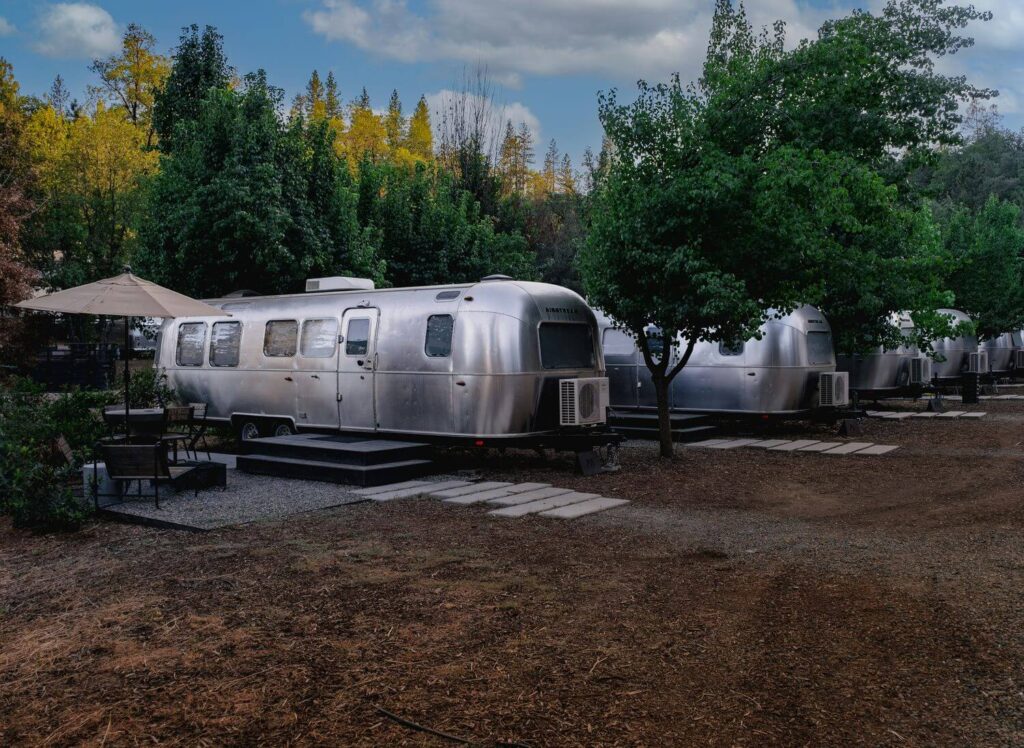
For a unique glamping experience, AutoCamp Yosemite in Midpines sits about 45 minutes from the park’s Arch Rock entrance. This 35-acre property features 80 custom Airstream trailers, 15 luxury tents, and three cabin suites. Guests enjoy amenities such as a swimming pool, hot tub, freshwater pond, and on-site hiking trails. The property includes a 4,000-square-foot clubhouse with a marketplace and indoor/outdoor lounges. Each accommodation comes with luxury linens, private outdoor spaces with fire pits and grills, and access to a full-service kitchen and general store.
Southern Entrance Options
Bass Lake at Yosemite RV Resort provides a beautiful setting with lake access and numerous amenities. Indian Flat RV Campground, just 30 minutes from the park entrance, offers a more intimate setting with only 25 sites but includes amenities like full hookups and a swimming pool. High Sierra RV and Mobile Park in Oakhurst provides a convenient no-frills option with easy access to restaurants, grocery stores, and shops.
Eastern Entrance Options
Near the Tioga Pass entrance, Mono Vista RV Park serves as an excellent base for exploring both Yosemite and Mono Lake. Golden Pine RV Park, located 32 miles from the Tioga Pass entrance, offers access to the June Lake community, complete with lake activities, a marina, and a local brewery. Both parks welcome rigs of all sizes and provide essential amenities for comfortable stays.
Tips for a Successful Camping Trip
Whether you’re a first-time visitor or a seasoned Yosemite camper, a little preparation goes a long way in making your stay more enjoyable. From choosing the right season for your visit to navigating the park’s transportation system, these tips will help you make the most of your Yosemite camping adventure.
Best Times to Visit
Yosemite has transformed from primarily a summer destination to a year-round attraction. However, camping availability and experience vary significantly by season. Summer remains the most popular time, offering reliable weather and access to all areas of the park. Spring brings spectacular waterfalls and wildflowers, though some campgrounds remain closed.
Fall offers fewer crowds and beautiful colors, while winter camping is available at Upper Pines and Camp 4 for those prepared for cold conditions. If you’re planning a summer visit, consider camping outside the valley for part of your stay to experience different areas of the park and extend your stay beyond the valley’s 7-night limit.
Transportation Tips
Once you’ve set up camp, the free Yosemite Valley shuttle makes it easy to explore without moving your vehicle. The shuttle connects all major valley destinations, including trailheads, visitor centers, and scenic viewpoints. If you’re camping outside the valley, plan for driving times to major attractions and consider using park shuttles once you reach the valley.
Conclusion
Camping in Yosemite National Park offers an unparalleled opportunity to immerse yourself in one of America’s most spectacular natural settings. While securing a campsite requires planning and persistence, the reward of waking up surrounded by Yosemite’s grandeur makes the effort worthwhile. Whether you choose a valley campground with easy access to iconic sights or a quieter high-country site, you’ll create memories that will last a lifetime.
Remember to check the park’s website regularly for updates on campground conditions and closures, as these can change based on weather, construction, or other factors. With proper planning and a flexible attitude, your Yosemite camping experience will be truly unforgettable.



